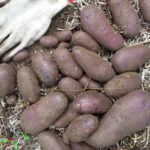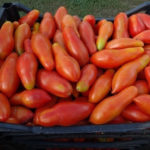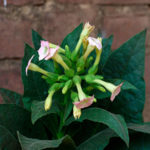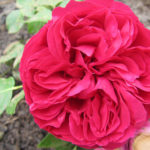Rose Amandine
There are roses that surprise at first, and only then delight. The reason for this is the extremely unusual coloration of their delicate flowers. Such plants include the variety with the euphonious and mysterious name Amandina.
Creation history and description
Decorative flowering perennial appeared in the 2004th year. Foreign breeder Olij Rozen became the author of the variety. Amandine is one of the most popular varieties of hybrid tea roses today. At the same time, the plant is included in the group of cut varieties.
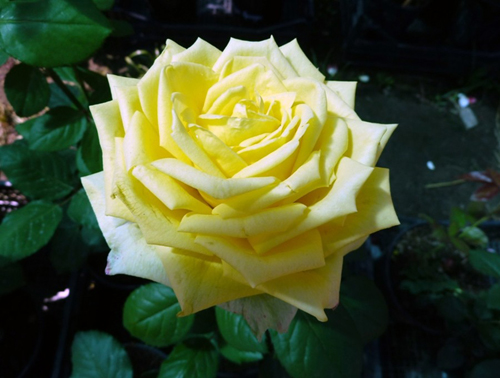
The highlight of this beautiful culture is the yellow color of the buds with a pronounced green tint. In the phase of complete dissolution, the flowers of this charming beauty are 10 to 14 cm in diameter and develop on thick, erect, fairly strong shoots one by one. The height of the bush is small, it varies from 0.5 to 0.8 meters. Its width is even less: about 40 cm. The stems of the plant are decorated with glossy, light green foliage. Returning to flowers, it is worth noting that they are characterized by the correct, classic form and the presence of an unobtrusive, subtle aroma with sweetish notes. Another feature is the high center. In addition, the petals of lovely flowers have slightly wavy edges and are somewhat curved, and most of all this concerns the lowest petals that frame the bud. The shape of the unblown buds is goblet, their size is from 6 to 8 cm. Each flower stays on the bush for about 8-10 days. Amandina is a variety of continuous and very abundant flowering.
The noble plant can withstand frosts down to -29 ° C. But despite the good winter hardiness, when grown in central Russia and regions with more severe climatic conditions, the rose needs a reliable shelter for the winter. Perennial flowers keep their shape perfectly, including when cut, and are also highly resistant to rain. The culture is not very resistant to black spot, powdery mildew and other diseases.
Features of agricultural technology
Amandine is a light-loving shrub. With this in mind, this variety should be planted in an area flooded with sunlight for most of the day. But it is desirable that in the summer, from noon to about 15:00, the flower is in openwork partial shade. The culture must be protected from cold drafts, for which it is not recommended to place it in open areas devoid of large greenery. At the same time, it is necessary to ensure normal air circulation around Amandine in order to prevent the appearance of harmful insects and fungal diseases. The original rose prefers loose, nutritious, slightly acidic soils with good drainage. In the selected sector of the site, you need to dig a planting hole with a depth of 0.5-0.6 meters, connect the soil with vermicompost, humus and peat. Half of this mixture is poured into the hole, but only after a layer of fine gravel has been laid on the bottom. Then the seedling is lowered into the hole and the roots are covered with the remaining substrate. Before planting, it will not hurt to soak the roots of the plant in water for half an hour. The planted shrub is watered abundantly.
Culture care is not too difficult. It includes standard measures: moistening the soil under a flower, loosening and mulching, removing weeds, feeding, pruning. Water the rose in hot weather 2-3 times, the rest of the time - once a week. Several buckets of soft water, slightly warmed up in the sun, are poured under the Amandine bush. It is better to do this in the morning or in the evening. They loosen the soil in the area of the trunk circle at least twice a month. At the same time, as necessary, weeding is carried out. Next, cover the soil under Amandine with mulch, ideally with a mixture of sawdust, manure and deciduous humus.
For top dressing, organic and mineral fertilizers are used. The first ones are applied under the rose only in spring, to stimulate the growth of green mass. As soon as the first buds begin to set on the rose bush, the organic matter is changed to mineral concentrates. Top dressing is continued at the peak of the flowering culture. In the spring, with the beginning of the sap flow process, the plant is pruned.Dead, too weak and damaged shoots are subject to removal. During the summer, faded inflorescences and dried leaves are promptly removed from the shrub. In autumn, in order to prepare the perennial for winter, the strong shoots are shortened, the bush is spud with dry soil and covered with spruce branches or textile insulation. Taking into account the susceptibility of the culture to fungal diseases, it should be treated with a fungicide solution three times per season for preventive purposes.
Use cases
The Amandina variety can be planted as a single bush or in groups. If you want to focus on the lemon-yellow inflorescences of a decorative perennial with a greenish tint, place a charming rose in the foreground of the site or in combination with conifers, whose dark green needles will contrast perfectly with the buds of light colors. A shrub surrounded by cereals, annuals with small flowers, fragrant herbs looks attractive. Amandine will take its rightful place in the rose garden and garden. The variety is ideal for planting on the sides of garden paths, for the formation of low hedges, for placement on round flower beds, in bed-beds and mixborders. Cut flowers stand in water for up to two weeks without losing their shape or crumbling.
